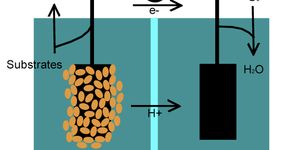Unlocking the Mysteries of DNA Organization in Humans
Scientists have been trying to unravel the complex organization of DNA in human cells for many years, and new work has uncovered the role of an important protein in this important process. Humans carry a lot of genetic material; it has to be carefully compacted into chromosomes so that it not only fits into cells, but so the right genetic material is available to cells at particular times. Disruption in that function can have dire consequences. This new data, reported in Cell, describes a previously unknown function of a protein called CTCF.
"The extreme compacting of DNA into chromosomes is like taking a telephone cord that stretches from San Francisco to New York, and stuffing it into a backpack," said lead author Benoit Bruneau, PhD, a senior investigator at Gladstone Institutes. "The organization of chromosomes is not random, but rather very complex, and it is critical for normal development. When this process goes wrong, it can contribute to various diseases."
Chromosomes get spun into loops, then further organized into large domains, topologically associating domains (TADs). Inside of every TAD a group of genes and other features that regulate them get packaged together, kept in a discreet place away from other TADs.
"Imagine TADs are like adjoining rooms: like the genes in each TAD, people in each room can talk to one another, but not to people in the next room," explained first author Elphège Nora, PhD, postdoctoral scholar in Bruneau's laboratory. "In previous work, we showed that TADs package genes together and insulate them from neighboring genes. The burning question then became: what controls this TAD organization?" The investigators may have answered that question.
"CTCF is a fascinating protein," said Bruneau, a Professor at the University of California, San Francisco. "It can be found at the boundaries of TAD domains, and was previously thought to be involved in many aspects of chromosome organization. We wanted to see what would happen to the structure of chromosomes if we removed all the CTCF from cells."
CTCF is a difficult protein to study; it can’t be removed from cells because without it they will die. "We used a new genetic method to completely eliminate CTCF in mammalian cells," said Nora. "Using this technique, we destroyed the protein very quickly so that we could study the cells before they died. This allowed us to look at the entire genome in the absence of CTCF and observe the effects."
Collaborating with computational biologists led by Leonid A. Mirny at the Massachusetts Institute of Technology, as well as a team of biochemists led by Job Dekker at the University of Massachusetts Medical School, the Gladstone scientists how CTCF helps insulate the TADs.
"We noticed that, in the absence of the CTCF protein, the insulating boundaries of TAD domains had almost fully disappeared, so that genes and regulatory elements could now interact with those in adjacent TADs," explained Nora. "This would be like removing the wall between adjoining rooms, so that people could now freely interact with others in the neighboring room."
It was also observed that a lack of CTCF did not affect how genes connected within a single TAD. This suggests that the insulatory function and the packaging process are two separate processes.
The investigators also utilized their new technique to learn more about DNA packaging. "We looked at a level of organization called compartmentalization, which separates active and inactive genes within a cell nucleus," said Nora. "This helps the cell identify which genes to use. For example, skins cells don't need eye-related genes, so these genes would be tightly packaged in a compartment and put away, because the cell will never use them. We used to think that boundaries of TAD domains were a prerequisite for the organization of these compartments."
"To our surprise, we found that is not the case," said Bruneau. "When we deleted the CTCF protein, which caused TAD boundaries to disappear, we saw no effect on the organization of the larger compartments. This interesting finding revealed that CTCF and TAD structure are not required for compartmentalization but, rather, that an independent mechanism is responsible for this chromosome organization."
"Our findings redefine the role of CTCF in gene regulation and provide new insights about the fundamental processes that govern genome organization" added Bruneau. "With this knowledge, we can now start reevaluating the cause of several diseases, as chromosome organization-including TADs-is often disrupted in many cancers and involved in significant developmental defects, such as congenital heart disease."
Learn more about the organization of DNA from the lecture above, presented by the NIH.
Sources: AAAS/Eurekalert! via Gladstone Institutes, Cell









